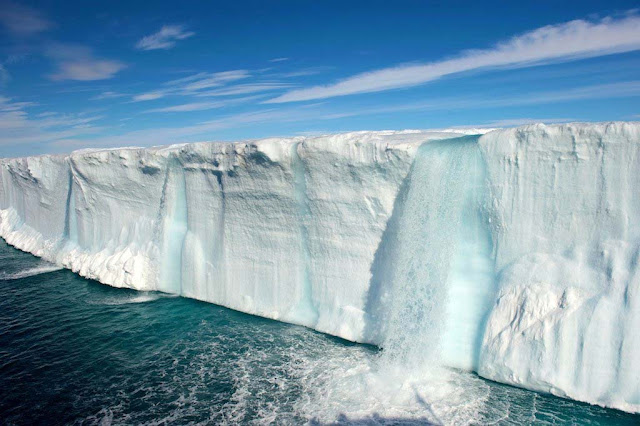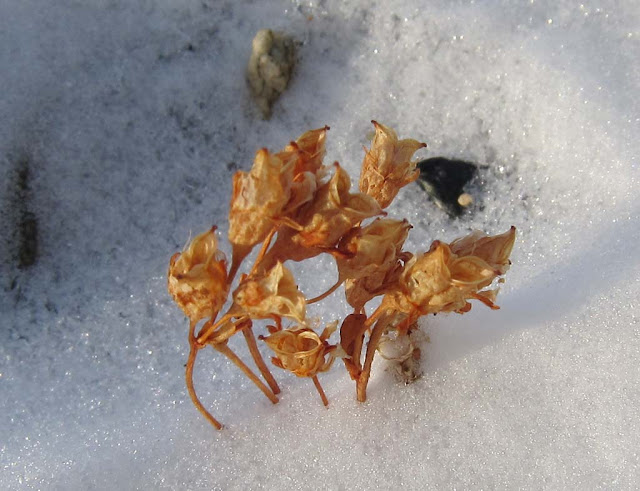A polar ice cap is a high latitude region of a planet or natural satellite that is covered in ice. There are no requirements with respect to size or composition for a body of ice to be termed a polar ice cap, nor any geological requirement for it to be over land; only that it must be a body of solid phase matter in the polar region.
 |
| Polar Ice Cap |
'Polar ice cap' to be something of a misnomer, as the term ice cap itself is applied with greater scrutiny as such bodies must be found over land, and possess a surface area of less than 50,000 km²: larger bodies are referred to as ice sheets. The composition of the ice will vary. For example Earth's polar ice caps are mainly water ice, while Mars's polar ice caps are a mixture of solid phase carbon dioxide and water ice. Polar ice caps form because high latitude regions receive less energy in the form of solar radiation from the sun than equatorial regions, resulting in lower surface temperatures.
The Earth's polar ice caps have changed dramatically over the last 12,000 years. Seasonal variations of the ice caps take place due to varied solar energy absorption as the planet or moon revolves around the sun. Additionally, in geologic time scales, the ice caps may grow or shrink due to climate variation. Ice caps are generally in the negative in temperature.
Text source:- Wikipedia. Images are copyrighted by their owners. Found any copyright issue, contact the administrator immediately. Report it now!
You have read this article Antarctica /
Ice Sheets /
Oceania /
Wonders /
Wonders of United States
with the title Polar Ice Cap. You can bookmark this page URL http://tiffanyeatworld.blogspot.com/2012/03/polar-ice-cap.html. Thanks!
























